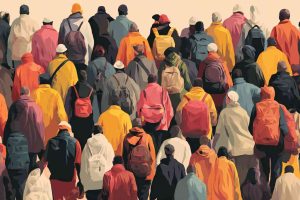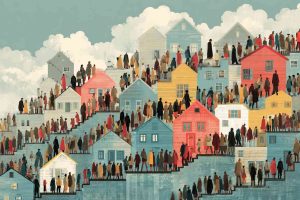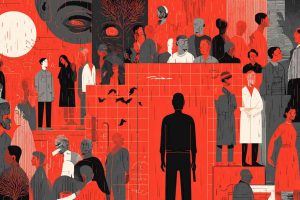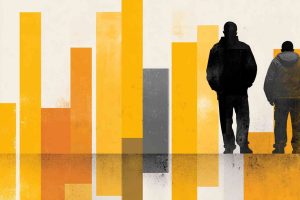Asylum centres and their destructive impact on cities, towns, and communities
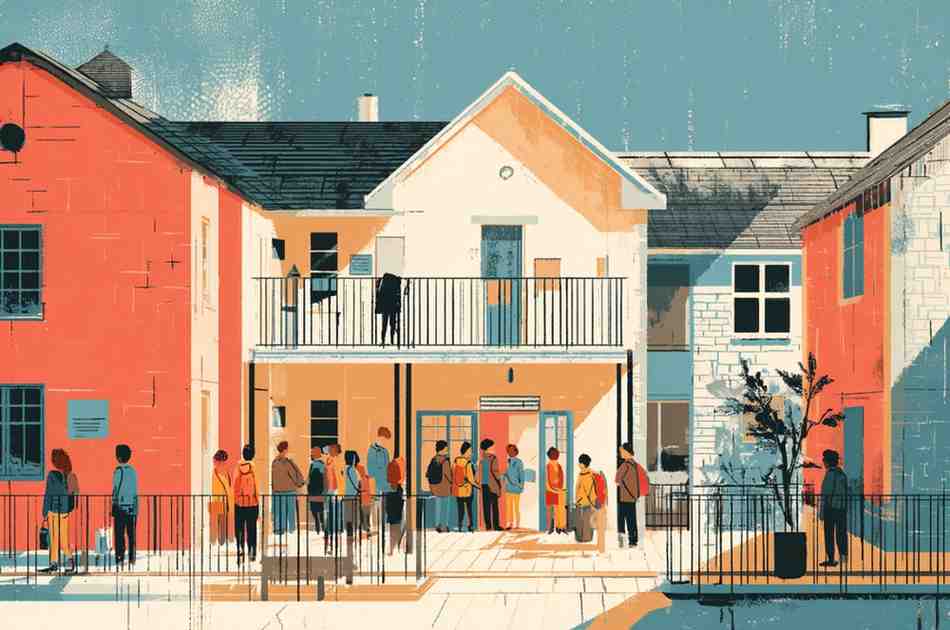
The ideology behind reception and the harsh reality
In public discourse, asylum seekers’ centres (AZCs) are often presented as symbols of compassion and international responsibility. The narrative goes that sheltering people fleeing war, violence, and persecution is not only a moral obligation but also enriching for society. However, this approach ignores the very real, structural, and growing downsides that AZCs bring to the cities and towns in which they are established.
The reality is that the presence of an AZC rarely strengthens a local community, but more often undermines it. Municipalities are confronted with public disorder, insecurity, pressure on public services, cultural clashes, democratic frustration, and economic burdens. More and more citizens and local administrators are sounding the alarm. It is time for an honest, fact-based, and unfiltered look at what AZCs truly mean for their surroundings.
Who resides in asylum centres?
Although many believe that asylum seekers are mostly women and children, statistics paint a different picture. According to data from the Central Agency for the Reception of Asylum Seekers (COA) and the Immigration and Naturalisation Service (IND), the vast majority of asylum seekers are young, single men between the ages of 18 and 35. These men predominantly come from countries such as Syria, Eritrea, Somalia, Afghanistan, Yemen, Iraq, and various North African nations like Morocco and Algeria.
This demographic composition has significant consequences. In small villages, where the population is often aging and closely knit, the arrival of hundreds of young, culturally foreign men can rapidly damage the social fabric. The sudden imbalance in age, gender, and culture almost inevitably leads to tension.
Structural disorder and crime
It is an uncomfortable truth often ignored by policymakers: many AZCs are hotspots for public disorder and crime. In nearly every centre, incidents eventually occur ranging from noise complaints and harassment to violence, theft, and sexual offences.
In Ter Apel, the largest reception centre in the Netherlands, hundreds of criminal incidents are reported each year. In 2023 alone, there were over 800 reports of criminal behaviour and public order disturbances (Ter Apel kampt met structurele overlast, De Telegraaf). The same individuals, often from so-called ‘safe countries’ with no asylum rights, are frequently responsible for repeat offences. Police and military police are overwhelmed.
A report by the Inspectorate of Justice and Security confirms these findings, pointing to a lack of enforcement and effective sanctions for chronic offenders within the asylum system (Jaarbeeld toezicht 2022, Inspectie JenV).
Public safety at risk
Residents living near AZCs often report feelings of insecurity. Women and girls avoid bike paths, shopping centres, and bus stops when confronted by groups of young men who catcall or intimidate them. Local shops report increased theft, vandalism, and a drop in customers. In some municipalities, authorities have even established ‘exclusion zones’ where asylum seekers are no longer allowed, such as in Budel and Weert.
The right to safety and undisturbed living is being undermined. Many citizens feel abandoned by a government that facilitates asylum reception but fails to protect its own people.
Financial burden on municipalities
AZCs are expensive, extremely so. The costs of reception, security, interpreters, medical care, legal aid, and integration projects amount to billions. In 2023, total spending on asylum reception exceeded €3.5 billion (Nederlandse migratie-uitgaven 2023, CPB). A significant portion of this burden is passed on to municipalities, which are required to cooperate in the establishment of AZCs and housing for recognised refugees.
In addition, municipalities face unexpected costs such as increased police deployment, youth care, public health services, and social workers. Smaller towns with limited budgets quickly become overwhelmed. For local entrepreneurs, the arrival of an AZC often means loss of business and reputational damage.
Housing pressure and displacement
One of the most distressing consequences of AZCs is their impact on the housing market. Municipalities are legally obliged to house a quota of recognised refugees. This means that these individuals, with priority, are granted access to social housing, at the expense of Dutch citizens. Young people, first-time buyers, single parents, and low-income households are forced to wait even longer for affordable homes.
This displacement fuels widespread social frustration. In cities like Amsterdam and Utrecht, the average waiting time for social housing is now between 12 and 15 years. Yet thousands of homes are annually reserved for status holders (Monitor Woningcorporaties 2024, Rijksoverheid).
Pressure on education and healthcare
The arrival of large numbers of asylum seekers puts severe pressure on schools and healthcare providers. Primary schools face pupils who do not speak the language, are traumatised, and exhibit behavioural issues. Teachers often lack the expertise or resources to respond adequately.
In healthcare, the influx leads to long waiting times and capacity problems. Asylum seekers often suffer from complex physical or psychological issues such as PTSD, depression, or infectious diseases. General practitioners, public health offices, and hospitals must deploy extra staff while already dealing with shortages.
Cultural clashes and failed integration
Another persistent problem is the cultural friction between asylum seekers and the local population. The norms and values of many newcomers differ significantly from those in the Netherlands. Views on women’s rights, sexual orientation, authority, religion, child-rearing, and freedom of speech often clash with Dutch society.
Although the government promotes integration through courses and participation projects, the results are disappointing. According to the Netherlands Institute for Social Research (SCP), only 45% of Syrian status holders are economically independent after five years. The rest live on welfare or other public support (Integratie in zicht?, SCP). This shows that the promises of self-sufficiency and enrichment are rarely fulfilled.
Democratic deficit and lack of citizen input
The manner in which AZCs are placed in towns and villages is deeply undemocratic. Residents are often only informed once the decision has already been made. Municipal councils cite urgency, national pressure, or ‘executive responsibility’, but in doing so they ignore the democratic principle of local consent.
Numerous municipalities have seen citizen protests erupt against new AZCs, including Beverwaard, Enschede, Luttelgeest, Maastricht, and Harderwijk. Petitions, demonstrations, and legal actions indicate that public support is very limited. Citizens feel excluded from decisions that profoundly affect their neighbourhoods.
Parallel societies and alienation
In some cities, parallel societies emerge where groups of asylum seekers and status holders have little or no contact with native residents. They live in separate districts, attend different schools, speak no Dutch, and rely on their own ethnic networks for services and goods. This strengthens segregation, distrust, and polarisation.
Meanwhile, the government continues to promote idealistic rhetoric about diversity and inclusion, while in practice more and more Dutch people feel like strangers in their own neighbourhoods. The loss of cultural continuity and social cohesion has far-reaching effects on national identity.
Alternatives and solutions
Although Dutch policy has long focused on hosting asylum seekers within national borders, there are viable alternatives. Some suggestions include:
- Regional reception outside Europe, such as in safe third countries, where asylum procedures can be handled and shelter offered in a culturally familiar context.
- Small-scale, temporary reception away from residential areas, such as in industrial zones or military bases, to minimise local impact.
- Strict return policies for rejected asylum seekers, especially those from safe countries.
- Democratic input for municipalities and residents, making public support a requirement for establishing AZCs.
- Caps on the number of asylum seekers and revision of treaties, to regain control over migration flows.
Conclusion: the price of well-meaning policy
Asylum seekers’ centres symbolise a well-intentioned but naive approach to international solidarity. In reality, they saddle local communities with social, economic, and cultural problems that continue to pile up.
As long as intake remains high, reception is enforced, and integration fails, public support will erode and unrest will grow. It is time to put the interests of Dutch citizens first, not out of inhumanity, but out of realism, fairness, and responsibility toward our own society.


